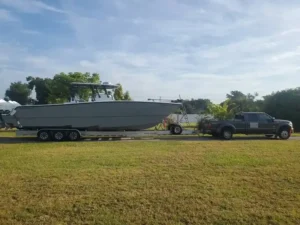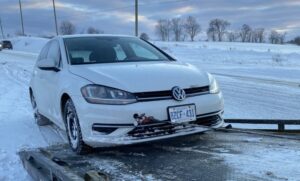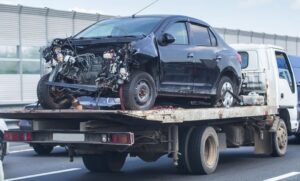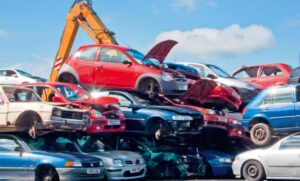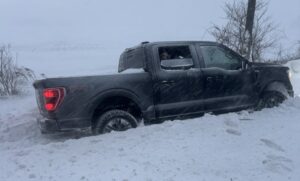In the diverse landscape of Ontario, from the bustling streets of Toronto to the serene communities like Aurora, moving vehicles is a common necessity. While professional towing services like Pars Towing are always ready to assist with breakdowns, accidents, or complex vehicle transport, many individuals opt for a do-it-yourself approach for certain moves. For these savvy movers, the Folding Car Tow Dolly has emerged as a revolutionary solution, offering unparalleled convenience and space-saving benefits. This article delves deep into everything you need to know about the Folding Car Tow Dolly, from its unique advantages to safe operation, and when to consider professional help from Pars Towing.
- Learn More >>> What to Look for in a Reliable Towing Company in Ontario?
The Ultimate Guide to the Folding Car Tow Dolly: Convenience, Storage, and Safe Towing in Ontario
1. What is a Folding Car Tow Dolly? A Game-Changer for Vehicle Transport
At its core, a car tow dolly is a two-wheeled trailer designed to transport a vehicle by lifting its front (or sometimes rear) wheels off the ground, allowing the remaining two wheels to roll on the road. The ingenuity of a Folding Car Tow Dolly lies in its ability to collapse or fold into a significantly more compact size when not in use. This “fold-and-store” design addresses one of the biggest challenges of traditional tow dollies: storage.
Traditional tow dollies, while effective, can be cumbersome and take up valuable space in a garage, driveway, or even at a campsite. A Folding Car Tow Dolly elegantly solves this problem, making it an attractive option for RV enthusiasts, seasonal movers, or anyone with limited storage space in areas like Aurora, Ontario, where property can be at a premium.
Key Components and How They Fold:
- Hitch Tongue: Often designed to pivot or retract into the main frame.
- Ramps: Integrated into the design, they might fold up, slide in, or detach and store within the frame.
- Wheel Pans/Cradles: These are typically fixed or may have a swivel mechanism, but the overall frame around them is designed for compactness.
- Frame: The main chassis of the dolly is engineered with hinges or telescoping parts that allow it to reduce its footprint by up to 50% or more.
2. The Unmatched Advantages of a Folding Car Tow Dolly
The decision to invest in or rent a Folding Car Tow Dolly often comes down to a blend of practicality, cost-effectiveness, and convenience. Let’s explore the primary benefits:
2.1. Superior Space-Saving and Storage
This is arguably the most significant advantage. Imagine a full-sized tow dolly consuming valuable garage space or cluttering your driveway. A Folding Car Tow Dolly can often be stored upright against a wall, tucked away in a corner, or even fit into smaller storage units. For RVers, this means less hassle at campgrounds where space is often limited. In urban and suburban areas like Aurora, where garage space is a luxury, this feature alone can be a deal-breaker.
2.2. Enhanced Portability and Maneuverability
Due to their compact folded size and often lighter construction, Folding Car Tow Dolly units are generally easier to move by hand when unhitched. This makes positioning them for loading or storing them after use much less strenuous. Some models even feature integrated wheels for easier rolling when folded.
- Learn More >>>Why Flatbed Towing Services Matter?
2.3. Cost-Effectiveness (Long-Term & Short-Term)
- Purchasing: While a Folding Car Tow Dolly might have a slightly higher initial cost than a basic non-folding model, the long-term savings on storage fees (if you’d otherwise need to rent space) or the sheer convenience often justify the investment.
- Renting: For those who only need a tow dolly occasionally, the availability of Folding Car Tow Dolly rentals might offer a more streamlined pickup and return process at some rental locations due to their easier handling and storage for the rental company.
2.4. Versatility for Various Vehicles
Like traditional tow dollies, a Folding Car Tow Dolly is primarily designed for front-wheel-drive vehicles, lifting the drive wheels off the ground to prevent transmission damage and unwanted mileage accumulation. However, with proper preparation (such as disconnecting the driveshaft), some rear-wheel-drive vehicles can also be towed. This versatility makes them a popular choice for towing a second vehicle behind an RV or for moving a car across town.
2.5. Ease of Use (Loading and Unloading)
While loading any vehicle onto a dolly requires practice, many Folding Car Tow Dolly designs prioritize user-friendliness. Integrated ramps and intuitive securing mechanisms simplify the process, often allowing for single-person operation once familiar with the steps.
- Learn More >>> towing service
3. Key Considerations When Choosing a Folding Car Tow Dolly
Not all folding dollies are created equal. Before you rent or purchase, keep these critical factors in mind:
3.1. Weight Capacity
This is paramount for safety. Always ensure the Folding Car Tow Dolly‘s maximum vehicle weight capacity exceeds the curb weight of the vehicle you intend to tow. Overloading can lead to dangerous instability, equipment failure, and potential accidents. Check your vehicle’s owner’s manual for its curb weight.
3.2. Braking Systems
Many Folding Car Tow Dolly models come with integrated braking systems, which are often legally required in Ontario for specific towed weights. Common types include: * Surge Brakes: Activated by the dolly pushing against the towing vehicle when braking. These are mechanical and don’t require an electrical connection to your tow vehicle’s brake system. * Electric Brakes: These require an electrical connection to your towing vehicle and a brake controller in the tow vehicle, offering more precise control. Always verify Ontario’s specific regulations for trailer brakes based on gross vehicle weight.
3.3. Tire Compatibility and Tread Width Adjustment
Ensure the dolly can accommodate the tire size and tread width of your vehicle. Many models offer adjustable wheel platforms to suit a range of vehicle makes and models. Incorrect fit can compromise security and lead to strap slippage.
3.4. Build Quality and Durability
Look for a Folding Car Tow Dolly made from robust materials (e.g., heavy-duty steel) with a durable finish (like powder coating) to resist rust and wear, especially given Ontario’s varying weather conditions. Read reviews and consider reputable manufacturers.
3.5. Ease of Folding Mechanism
Test the folding mechanism if possible. It should operate smoothly and securely, without excessive effort or complicated steps. A clunky mechanism will quickly negate the convenience benefit.
3.6. Safety Features
Beyond brakes, look for high-quality wheel straps with reliable ratchets, strong safety chains, and DOT-approved lighting. Some dollies include a swivel pan to reduce stress on the towed vehicle’s steering system.
- Learn More >>>Reliable Help Towing Day or Night
4. How to Safely Use Your Folding Car Tow Dolly: A Step-by-Step Guide
While the specifics might vary slightly by model, the general principles for safely using a Folding Car Tow Dolly remain consistent. Remember, safety is always the priority. If you’re ever in doubt, professionals like Pars Towing are here to help.
4.1. Pre-Trip Preparations: The Foundation of Safe Towing
- Inspect All Equipment: Before every use, thoroughly inspect the Folding Car Tow Dolly, your towing vehicle, and the vehicle to be towed.
- Dolly: Check tire pressure, lug nuts, lights, wiring, structural integrity, and the condition of straps and safety chains. Ensure the folding mechanism locks securely in the extended position.
- Towing Vehicle: Verify adequate towing capacity (check your owner’s manual), proper hitch ball size, secure hitch connection, and working trailer light connections. Check tire pressure, especially rear tires.
- Towed Vehicle: Remove any loose items, ensure tires are properly inflated, and confirm the parking brake is off. For front-wheel-drive vehicles, unlock the steering wheel. For rear-wheel-drive, disconnect the driveshaft or follow manufacturer-specific procedures (e.g., fuse removal) to prevent transmission damage.
- Choose a Level Surface: Always load and unload on a flat, firm, and level surface to ensure stability.
4.2. Connecting the Folding Car Tow Dolly to Your Towing Vehicle
- Unfold and Lock: If your dolly is in its folded state, carefully unfold it according to the manufacturer’s instructions and ensure all locking pins and mechanisms are securely engaged.
- Positioning: Back your towing vehicle slowly and carefully to align the hitch ball with the dolly’s coupler.
- Secure the Coupler: Lower the dolly onto the hitch ball, ensuring it’s fully seated. Lock the coupler in place, and double-check its security by trying to lift the dolly tongue.
- Attach Safety Chains: Cross the safety chains under the dolly’s tongue and attach them to the designated points on your towing vehicle’s hitch or frame.
- Connect Electrical Wiring: Plug in the wiring harness for the dolly’s lights and test all signals (brake, turn, running lights).
4.3. Loading the Car onto the Folding Car Tow Dolly
- Align the Car: Drive the vehicle to be towed slowly and precisely, aligning its front tires with the center of the dolly’s ramps. A spotter is highly recommended.
- Drive Onto the Dolly: Continue driving slowly and steadily up the ramps until the front wheels are fully seated in the wheel cradles. The car’s weight will settle the dolly.
- Engage Parking Brake: Once properly positioned, firmly engage the parking brake on the towed vehicle.
- Secure Wheel Straps: Place the wheel straps over the center of each front tire, ensuring they are flat and not twisted. Thread them through the ratchets and tighten them securely until the tires are slightly compressed.
- Attach Safety Chains: Connect the secondary safety chains from the dolly to a solid, structural part of the towed vehicle’s frame. Leave a slight amount of slack to allow for turns but prevent dragging.
- Final Walk-Around: Before moving, do a complete walk-around, checking all connections, straps, chains, and lights one last time.

- Learn More >>>How to Choose the Best Towing Service in the GTA
4.4. Driving with a Folding Car Tow Dolly
- Adjust Driving Habits: Remember you are now operating a longer, heavier, and more complex vehicle combination.
- Slower Speeds: Reduce your speed significantly, especially on turns, hills, and uneven roads. Adhere to all posted speed limits for trailers in Ontario.
- Increased Braking Distance: Anticipate stops much earlier and brake gently to avoid sudden jolts.
- Wider Turns: Account for the increased length and swing of the dolly by making wider turns.
- No Backing Up: Most tow dollies (folding or not) are not designed for backing up with a vehicle loaded. If you need to reverse, you will likely need to unhitch the dolly and reposition it manually, or unload the towed vehicle.
- Regular Checks: Pull over every hour or so to check the security of the straps, chains, and the general condition of the dolly and towed vehicle. Road vibrations can cause straps to loosen.
4.5. Unloading the Car
- Level Ground: Park on a flat, level surface.
- Secure Towing Vehicle: Keep the towing vehicle in “Park” with the parking brake engaged.
- Release Chains and Straps: Unfasten the safety chains from the towed vehicle, then carefully release and remove the wheel straps.
- Drive Off: Gently back the towed car off the dolly ramps.
- Fold and Store: Once the towed vehicle is safely off, you can disconnect the Folding Car Tow Dolly from your towing vehicle and fold it for storage.
5. Ontario Regulations and Your Folding Car Tow Dolly
Operating any trailer in Ontario, including a Folding Car Tow Dolly, means adhering to specific provincial regulations. While this article provides general guidance, it’s crucial to consult the latest Highway Traffic Act (HTA) and Ministry of Transportation (MTO) guidelines.
- Trailer Brakes: Ontario’s HTA generally requires trailers with a gross vehicle weight (GVW) over 1,360 kg (3,000 lbs) to have brakes on all wheels. Ensure your dolly’s braking system (surge or electric) complies.
- Lighting: All trailers must have working tail lights, brake lights, turn signals, and side marker lights as required.
- Safety Chains: Chains are mandatory and must be properly crossed and attached.
- Maximum Lengths and Weights: Be aware of overall length restrictions for vehicle combinations in Ontario. Ensure your combined setup (towing vehicle + dolly + towed vehicle) does not exceed legal limits.
- Driver’s License: For recreational towing with a light trailer like a tow dolly, a standard G class driver’s license is usually sufficient, provided the combined weight is within limits. However, always verify if your specific setup requires a higher class of license.
- Learn More >>>24 Hour Towing Near Me: Why You Need a Trusted Provider
6. When to Call Pars Towing: Your Aurora & Ontario Towing Experts
While a Folding Car Tow Dolly offers fantastic convenience for many, there are scenarios where professional towing services are the safest and most practical choice. This is where Pars Towing, your local experts in Aurora and across Ontario, steps in.
- Vehicle Compatibility Issues: If your vehicle is all-wheel-drive (AWD), four-wheel-drive (4WD), or a high-performance/luxury vehicle with specific towing requirements that a tow dolly cannot safely accommodate (e.g., inability to disconnect a driveshaft), professional flatbed towing is the only answer. Pars Towing has the specialized equipment for these vehicles.
- Breakdowns and Accidents: If your vehicle is disabled, damaged, or involved in an accident, attempting to load it onto a Folding Car Tow Dolly can be dangerous or impossible. Pars Towing provides rapid response and expert recovery services.
- Long-Distance Hauls: For very long distances, even with a tow dolly, the rear tires of your towed vehicle will accumulate mileage and wear. Flatbed towing, offered by Pars Towing, ensures no wear and tear on your towed vehicle’s tires or drivetrain, offering complete peace of mind for cross-province moves.
- Lack of Confidence or Experience: If you’re new to towing, or simply uncomfortable with the responsibility of loading and securing a vehicle, it’s wise to leave it to the professionals. Pars Towing’s experienced operators are trained in secure vehicle transport.
- Heavy or Oversized Vehicles: While tow dollies are great for many cars, they have weight limitations. For trucks, large SUVs, or commercial vehicles, Pars Towing has the heavy-duty tow trucks and expertise required.
- Emergency Situations: Flat tire on the dolly, a strap comes loose, or an unexpected mechanical issue with your towed vehicle while en route – these are all situations where you need reliable, immediate assistance. Pars Towing is equipped for roadside emergencies throughout the Aurora area and beyond.

